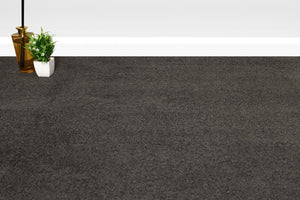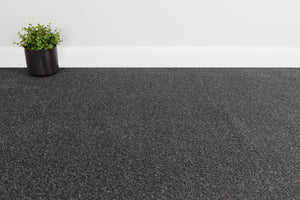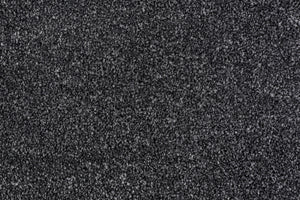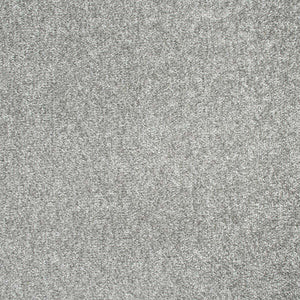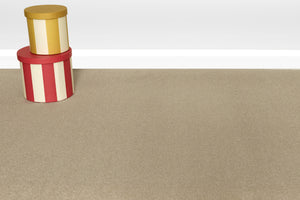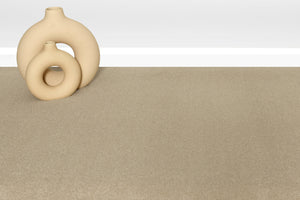
If you have outdated vinyl floors and want a budget-friendly makeover, you might be wondering: Can you paint vinyl flooring?
The short answer is yes, you can paint vinyl floors. But there are some important things to know first.
Here’s our honest guide to painting vinyl flooring, with pros, cons, and step-by-step tips if you decide to try it.
Table of Contents
-
Can You Paint Vinyl Flooring?
-
Pros of Painting Vinyl Flooring
-
Cons of Painting Vinyl Flooring
-
Best Situations for Painting Vinyl
-
What You'll Need
-
How to Paint Vinyl Flooring: Step by Step
-
Pro Tips for Best Results
-
Final Note: Refresh or Replace?
Can You Paint Vinyl Flooring?
Yes, you can paint vinyl flooring, and many DIYers do it to refresh old or dated patterns.
But it’s not always the best long-term solution. Paint won’t be as durable as new vinyl or laminate, especially in high-traffic or wet areas.
Pros of Painting Vinyl Flooring
-
Budget-friendly: Cheaper than replacing flooring.
-
Customisable: Choose any colour or pattern.
-
Quick refresh: Great for short-term or rental updates.
-
Eco-friendly: Avoids sending old flooring to landfill (at least for a while).
Cons of Painting Vinyl Flooring
-
Durability: Paint can scratch, chip, or wear in high-traffic areas.
-
Moisture issues: Not waterproof so can peel in bathrooms or kitchens.
-
Maintenance: Needs gentle cleaning to avoid damage.
-
May reduce resale appeal: Not everyone loves a painted floor.
Best Situations for Painting Vinyl
Painting vinyl might be a good idea if:
-
You’re updating a low-traffic space like a closet or guest room.
-
You want a temporary update before a full renovation.
-
Your budget is tight but you want a new look.
-
The existing vinyl is in good shape (no tears or water damage).
What You'll Need
-
Degreasing cleaner
-
Sandpaper (fine-grit)
-
Painter’s tape
-
High-adhesion primer (bonding primer)
-
Porch and floor paint or epoxy paint (for durability)
-
Paint roller and brushes
-
Polyurethane sealer (optional but recommended)
How to Paint Vinyl Flooring: Step by Step
1. Clean Thoroughly
-
Sweep and vacuum all dirt.
-
Wash with a degreasing cleaner to remove residue.
-
Let dry completely.
2. Lightly Sand the Surface
-
Use fine-grit sandpaper to scuff the surface.
-
Helps the primer and paint bond.
-
Wipe away all dust with a damp cloth.
3. Tape Edges and Fixtures
-
Protect baseboards, walls, and anything you don’t want painted.
-
Use painter’s tape for clean lines.
4. Apply Bonding Primer
-
Choose a high-adhesion primer made for glossy surfaces.
-
Roll on evenly, covering all vinyl.
-
Let it dry as per manufacturer instructions.
5. Paint the Floor
-
Use porch/floor paint or epoxy paint for best durability.
-
Apply in thin, even coats with a roller.
-
Let each coat dry before adding another.
-
Usually 2–3 coats for solid coverage.
6. Optional: Seal the Surface
-
Apply a clear polyurethane floor sealer for extra protection.
-
Helps resist scratches and stains.
-
Follow drying times carefully.
Pro Tips for Best Results
-
Ventilate well when painting and sealing.
-
Always check product instructions for drying times.
-
Be patient as proper curing makes a big difference.
-
Avoid moving furniture back in until fully cured.
-
Remember: painted vinyl is best for light use rooms.
Final Note: Refresh or Replace?
Painting vinyl flooring can be a fun, cost-effective way to refresh a space. But for busy kitchens, bathrooms, and hallways, new vinyl or laminate flooring offers better long-term durability and style.
Ready to upgrade your floors?
Browse our full vinyl flooring range or contact us today for expert advice, samples, and support.
